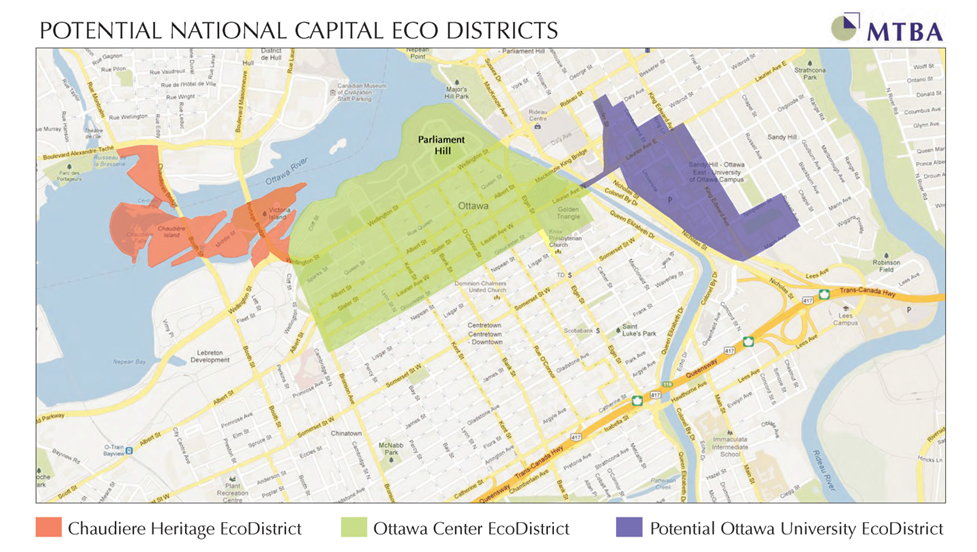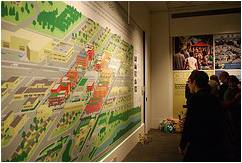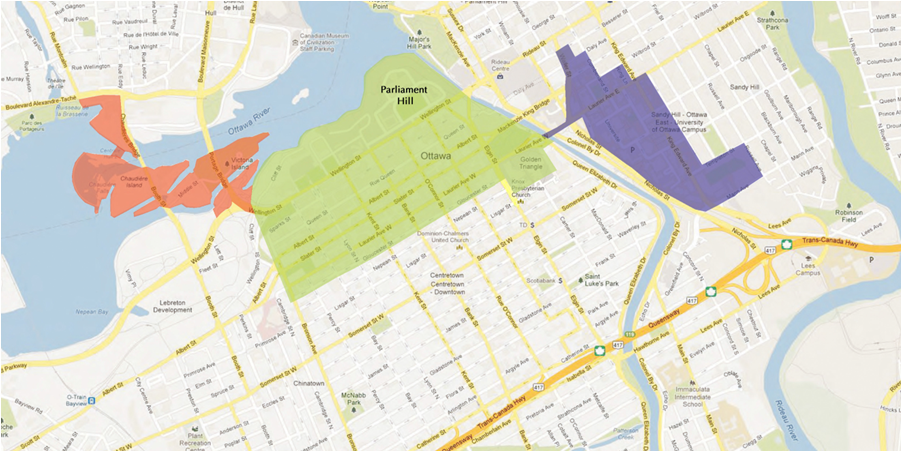Learning about and celebrating projects that are transforming our neighborhoods into walk-able, sustainable, resilient and thriving communities, The Neighborhoods Go Green! Exhibit explores the enormous potential of a whole neighborhood approach to city-building, economic development and “greening” our cities. It challenges visitors to think big—linking the importance of sustainability with the places where we all live, work and play. Using “LEED for Neighborhood Development” ™ as a framework for designing green quartiers and “Eco-Districts”, the exhibit features the key elements of a model green neighborhood and showcases successful international and local projects. Examples of sustainable neighborhoods in the United States and Canada describe neighborhoods that have good public transportation, affordable housing, and places where people can walk and bike without having to drive a car. Examples include heritage neighbourhoods that conserve nature and culture, like the Brewery Blocks in Portland, OR. Using large, mural-scaled displays, the highly visual NGG! Exhibition is designed to reward both the casual passer-by and the more sophisticated planning or sustainability aficionado or professional. The exhibition identifies the obstacles to creating sustainable communities, gets people thinking about what they can do to improve their communities and encourages future growth that is responsible and sensitive to historic places.
Designed to bring attention to the need for sustainable neighborhoods, the NGG! Exhibition includes suggestions to select ‘smart’ sites as well as creating livable neighborhoods, all while reducing energy consumption and establishing an economically thriving and resilient base for city-building.

Entertaining and Educational; Local Engagement
While taking a NorAm continental focus, the exhibit challenges local policymakers and advocacy groups to incentivize and encourage LEED for Neighborhood Development and EcoDistricts projects. One of the dynamic features of the exhibit is the “Regional Challenge”. Unique to each exhibit location, the exhibit curators and collaborators encourage local government, companies and residents to meet a community commitment. For example, to challenge regional policy-makers, politicians and green-builders in the Region to establish green neighborhood projects in and around the National Capital Region and for regional agencies to encourage LEED for Neighborhood Development and Eco-District frameworks for future redevelopment projects. Local issues and projects will be selected by the local curatorial team and featured in the exhibit.
MTBA Image of possibilities in the Capital Core for Eco-Districts. Eventually these contiguous districts could expend to include other inner-city areas. Note that:
*The Ottawa Centre Eco-District is already up-and-running as an organization and making great headway in establishing itself in the community.
*The Chaudiére Heritage EcoDistrict is approaching reality with the purchase of the Domtar lands and heritage-sensitive proposed sustainable development there by Windmill Development Group.
*The University of Ottawa is in effect an operating EcoDistrict, without being designated as such but it is designated as a “green” campus by an international organization.
Neighbourhoods Go Green! is may be brought to Ottawa, only the seventh North American city to present this exciting “edu-tainment” showcase, by MTBA and a group of architects, planners, environmentalists, engineers, local governments, private companies, institutions and heritage organizations hoping to help transform Canada’s National Capital Region into a global leader of sustainability, while advancing and enhancing the local economy, through green building, smart growth planning, heritage conservation and green neighborhoods. The Ottawa version of this event may be initiated and guided by the Ottawa Region Chapter of the Canadian Green Building Council (ORC – CaGBC) and Heritage Ottawa (HO), in potential partnership with the City of Ottawa and the National Capital Commission (TBC). This exhibition demonstrates commitment to sustainable growth, cultural conservation and liveable urban experience.
Engaging, Lively, Colourful
The exhibit’s graphics, which include a model green neighborhood, take the viewer through the following topics:
- Selecting a Smart Site. Where are the best locations for new green neighborhoods? Learn why selecting a site near schools, historic commercial centers, and existing infrastructure such as public transit is critical to creating sustainable communities.
- Creating Lively Places. How do we design vibrant neighborhoods? Preserve heritage character through adaptive reuse? Discover how a compact, walk-able layout and a mix of shops and housing make lively places.
- Integrating Buildings and Infrastructure. How can buildings and infrastructure work together to reduce waste and save energy? See how innovative water management and energy conservation strategies create greater sustainability than green buildings can achieve alone.
- Rating the Neighborhood. How are green neighborhoods certified? Learn more about the LEED for Neighborhood Development rating system designed by the U.S. Green Building Council and its partners.
Designing a Model Green Neighborhood. What does a green community look like? Explore a detailed rendering of a model neighborhood that incorporates sustainable design practices. Learn more about “Eco-District” models being implemented around the world.
Engaging, Lively, Colourful
The exhibit’s graphics, which include a model green neighborhood, take the viewer through the following topics:
- Selecting a Smart Site. Where are the best locations for new green neighborhoods? Learn why selecting a site near schools, historic commercial centers, and existing infrastructure such as public transit is critical to creating sustainable communities.
- Creating Lively Places. How do we design vibrant
 neighborhoods? Preserve heritage character through adaptive reuse? Discover how a compact, walk-able layout and a mix of shops and housing make lively places.
neighborhoods? Preserve heritage character through adaptive reuse? Discover how a compact, walk-able layout and a mix of shops and housing make lively places. - Integrating Buildings and Infrastructure. How can buildings and infrastructure work together to reduce waste and save energy? See how innovative water management and energy conservation strategies create greater sustainability than green buildings can achieve alone.
- Rating the Neighborhood. How are green neighborhoods certified? Learn more about the LEED for Neighborhood Development rating system designed by the U.S. Green Building Council and its partners.
- Designing a Model Green Neighborhood. What does a green community look like? Explore a detailed rendering of a model neighborhood that incorporates sustainable design practices. Learn more about “Eco-District” models being implemented around the world.
View example of exhibition panels here

